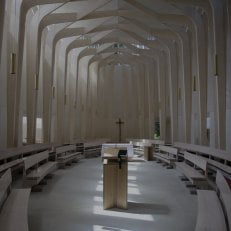Culture Recovery Fund
Arts organisations up and down the country will currently be immersed in the ACE Culture Recovery Fund application process, which opened last Monday. Administered by Arts Council England the £500 million fund could provide a much needed life-line for many.
The minimum grant level on offer through the new fund is £50,000, with a top level of £3 million – with additional loan funding also being made available. Applications will be received, assessed and turned around in two frighteningly quick rounds;
- Round 1 opening on 10 Aug – closing 21st Aug. Decisions by 5 October (unless the application was for over 1 million, I which case no later than 23rd October)
- Round 2 opening 21 Aug closing 4 Sept. Decision by 16 October (for over 1 million, no later than 6th November)
75% of the available money will be distributed in Round 1 and 25% in Round 2. The Arts Council encourages you to apply in Round 1 if at all possible. Applicants can only apply once! Even if you were unsuccessful in Round 1 you cannot submit the same or a different/ improved application in Round 2.
The application appears to be relatively brief. After the usual initial questions about the organisation, ACE asks only 4 main questions. Question 1 is the Covid question. How has it impacted on your sustainability, viability and resilience, Question 2 asks applicants how the grant money enables them to achieve financial viability by 31st March 2021. Question 3 asks to demonstrate cultural significance and Question 4 how you will improve the diversity of workforce, governance, audiences, visitors and participants.
ACE aims to help those organisations “which were financially sustainable before Covid-19 but are now at imminent risk of failure and have exhausted all other options for increasing their resilience”. Applicants to the ACE Culture Recovery Fund will have to set out a budget for how they will use the money received over six months, and also provide cashflow, budgets and accounts to show that they weren’t at risk of closure prior to the pandemic. The grant would cover the 6 months from 1st October 2020 to 31st March 2021. Costs, debts, expenses incurred before 1st October this year are not covered by the grant.
Although the financial assessment appears straight forward, applicants will be faced with a rather delicate balance to strike. On the one hand they have to show that they were viable before the Covid crisis but they also have to be “at clear risk of no longer trading viably by 31 March 2021”. In other words, you have to be financially healthy, but not so healthy that ACE deems you can survive on your own.
The fund is specifically for ensuring Arts organisations achieve financial viability and can re-open when it is safe to do so; keep paying the rent and utilities, equipment, take staff back after furlough (but it also covers redundancy payments), make changes to venues or formats for safe performance. Applicants do not have to have a programme of activity during the 6 months until 31st March.
Grant money can’t be invested in the artistic programme post 31st March. Expenditure for the programme post-31st March is explicitly excluded. It looks like arts organisations will have to look at their fundraising efforts for rebuilding their artistic programme offer for future seasons. No doubt many successful applicants will use their funding for a rigorous organisational re-structure, possibly with an emphasis on Development.
The ACE expects this programme to be oversubscribed. After ensuring the applicant meets the criteria set in questions 1-4, they will apply the so-called balancing criteria. The balancing criteria aim to ensure that successful applicants are equally spread across the country, across artforms, across size and type and across organisations demonstrating strong commitment to diversity and access amongst culturally undernourished communities.
Therefore, it looks like the sting of this process could be very much in the tail. In a scenario where the programme is oversubscribed, arts organisations that strongly meet the criteria of questions 1-4 could still fall foul of the ACE’s balancing exercise. For example; there tend to be a disproportionate amount of applications from London compared to the rest of the country. Similarly, music tends to be overrepresented compared to other artforms. A London-based music group for example is vulnerable and could lose out against a dance company from the North even if both organisations submit financial assessments that the ACE considers fundable.
If you’re interested in finding out how Craigmyle can help your arts organisation, please get in touch.








